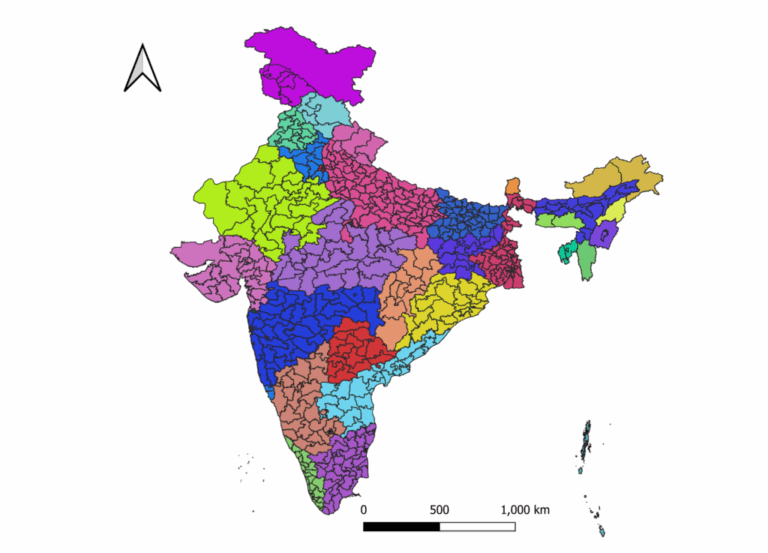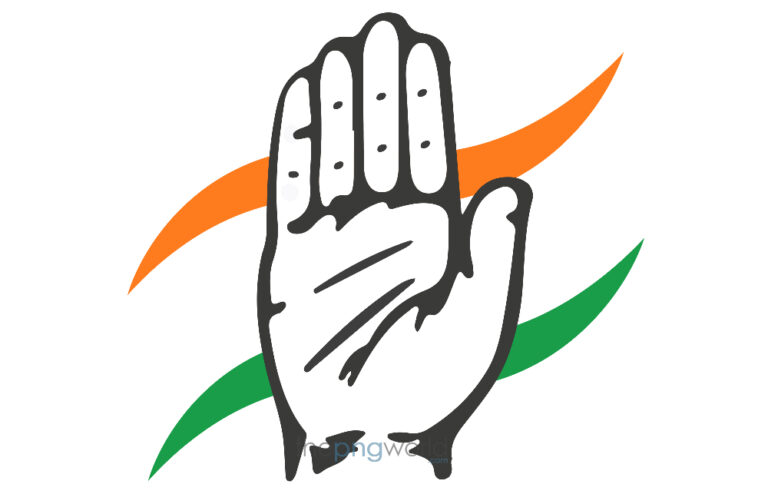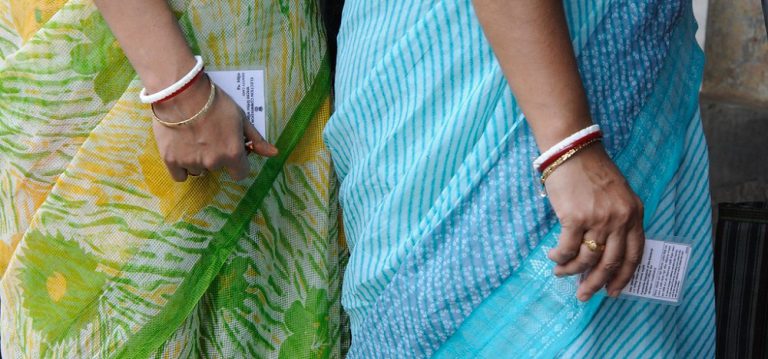West Bengal: What is making BJP so optimistic about this election?

A student of politics.
Bengal is closing in on the state election. Something unusual is happening by Bengal’s standards: BJP has emerged as a strong candidate, perhaps the only real challenger to the TMC government. On 8 March, Times Now’s C Voter opinion poll gave TMC a narrow majority, clocking in at 154, while the BJP got 107. But the opinion poll does not seem to have changed the tone or tenor of either party. The collective behaviour of TMC is leaning by the day towards the defensive, while BJP is appearing more and more optimistic. What explains BJP’s optimism?
- Corruption – While corruption is not a new thing and the people of Bengal are used to governmental corruption, a widespread perception is the TMC government has gone beyond the pale. ‘Cut money’, siphoning off rice rations meant for public distribution, misappropriation of money meant for Amphan cyclone victims – these have all dented TMC’s image, some say to the point of no return.
TMC has not had a coherent response to any of these accusations. The most publicised response has been CM Mamata Banerjee asking party workers to return the ‘cut money’, which opponents seized on to say was an open admission of TMC indulging in corruption.
To compound troubles, persons very close to the party high command have been taken into custody for illegal coal mining and cross-border trade in cattle. The latter will be a big issue in the eastern districts sharing a border with Bangladesh.
Corruption is most endemic at the municipal and panchayat levels. To be fair to the TMC, they only continued a system that predated them in Bengal. However, it is only natural that the party in power today is being blamed for continuing the practice. The BJP has positioned itself as a non-corrupt party with a proven record of good governance, and it is likely to be a significant factor in the election.
- Incompetence – The Amphan cyclone that hit the state in 2020 was devastating in its impact on electricity lines, waterlogging, destruction of houses, roads etc. It caught the state electricity board off-guard as engineers struggled to restore power over large sections of the state. In some areas of Kolkata, power was not restored for a week or longer. It brought people out on the road who complained about the incompetence of the state government. Although the national media devoted little attention to these protests, it started off a spiral of protests against the incompetence of the government that has not yet died down.
The state government’s handling of the corona pandemic too has been disastrous, to say the least. Hiding the number of cases and deaths, directing doctors to strike off the deaths of co-morbid patients from the category of corona deaths, giving wrong information to families of corona patients, insensitive handling of corpses and general unpreparedness with regard to hospital facilities did not endear the government to people of the state. So close to the elections, these events are bound to have an effect on the election. To top it off, a doctor who had brought to the notice of the health department the inferior quality of kits supplied to doctors, was detained illegally and pressurised to delete his posts on social media and apologise.
Finally, Mamata Banerjee’s managerial capacity in running her party has come into question. The rise of Abhishek Banerjee in the party created the strange situation of a leader who chose to sacrifice family life for politics indulging in dynasty-building. Coupled with Prashant Kishor’s hiring, it led to a massive exodus, and showed Mamata Banerjee’s incompetence in keeping her own party in order.
- Development and industry – Bengal, one of the more industrialised states in India at the time of independence, has undergone a steady decline. The feeling in Bengal is the state has been made to go through prolonged stagnation due to political motives. Just to illustrate the point, there were no outgoing ‘Sharmik Special’ trains from West Bengal when the lockdown was lifted. It showed that Bengal only sends its people elsewhere to work, but does not host people of other states, a major indication of the developmental health of the state.
The state government has devoted considerable resources to host several investor summits and project Bengal as an investor-friendly state, but the results are not significant. Moreover, the government indulged in fabricating budget figures, drawing criticism. It brought the government and party nothing but a bad name of being thick-skinned liars.
The BJP is yet to come up with a blueprint for how it intends to develop Bengal. Yet, it has unequivocally stated its intention to take Bengal in that direction. Whether it can do so or not we will know in the future, but the crucial point is sections across Bengal have taken this message to heart. A common feeling is nearly half a century after the beginning of prolonged stagnation, Bengal is rearing for development. Needless to say, BJP is the only party in a position to benefit from it.
- Law and order – By now, it has become common for Bengal-watchers to associate the state with a culture of violence, especially political violence. The 2019 general election witnessed a prolonged period of violence, carrying on for months after the election ended. In 2018, all opposition parties of all hues complained they were not allowed to file nominations to contest panchayat elections. 20,000 seats, 34% of the total, went uncontested. According to the BJP, 129 of its members have been killed in the build-up to the present election, including MLA Debendra Nath Roy who was found hanging from a tree. The state government’s attitude has routinely dismissed these incidents as non-political or having been caused by internal faction fights within BJP. There have been accusations against the police of acting partially in favour of the ruling party. In its campaign, BJP has prioritised law and order. Of course, opponents of BJP do not fail to remind the record of BJP in the states it is ruling. But the crucial thing is how the state electorate views the BJP, and not how BJP’s opponents view them.
An interesting thing to note is other opposition parties are not in a position to benefit from this state of affairs as the BJP is. The reason is simple. In the minds of people, the Communists are largely responsible for consolidating this culture of violence. Booth capturing, not allowing opponents to file nominations, intimidation through beatings, murders, maintaining armed squads, violent strikes – all these are squarely associated with the Left Front. As a result, though non-BJP opponents have been victims of TMC violence as well, they cannot mount a serious challenge to win the elections. In fact, precisely because the Left Front and Congress are not seen by the TMC as a serious opponent, attacks on members of these two parties have been negligible.
- National Integration – The most publicised aspect of this election has been the insider-outsider conflict. In response to BJP’s use of the word for people illegally entering through the eastern border, TMC branded the BJP an outsider party. Many clarifications and counter-clarifications have been given since, but the moot issue is what is the nature of the autonomy a state has in the federal arrangement? If statements given by TMC leaders are an indication, they seem to be saying communalism is a foreign concept in Bengal and BJP, being a communal party, is a party foreign to Bengal.
Communists and TMC intellectuals have made much about Bengal’s ‘secularist’ credentials, but their claims rest on a thin thread. The rabidly anti-historical attitude of secularists has been to whitewash the history of partition and project a flowery picture that paints Bengal as a place where Hindus and Muslims have no communal consciousness, and it is only BJP, the outsider, that is creating communal trouble to polarise the electorate. Naturally, incidents of a communal nature been carefully neglected, and the might of the state has been brought to bear on a fringe of journalists getting too clever for their own good. It seems the secularists believe the only way to reconcile is by erasing the truth. This attitude is ultimately suicidal.
The 2019 general election already called into question this cherished secular stereotype. Many Bengal-watchers got a shock then, because they expected Bengal to be immune to the politics of BJP. But now, with the BJP appearing to be a realistic contender, we are witnessing a hysteria of sorts. From conspiratorial attacks on the CM by unknown assailants to a human rights group advocating a purely negative ‘No Vote to BJP’ exercise of mandate, Bengal’s election has acquired an autonomous comic value, albeit of a dark variety.
Without elaborating, it appears astonishing that a state government thought it is a good strategy to block central schemes, re-package central resources in its own name and challenge the central ruling party as an outsider. To top it off, even though BJP has de-prioritised NRC, the attitude of the Bengal government towards both CAA and NRC are in total opposition to substantial portions of the state’s population. This is undoubtedly working in favour of the BJP, who could not have hoped for better publicity than what they are getting from the state government.
An undercurrent of national integration is definitely present, and its basic outline is the three parties that ruled Bengal since Independence have engaged in social and political engineering that prevented the state from being organically integrated with the nation politically, economically and, most importantly, mentally. It is an unfinished job, and BJP is presenting itself as the party that will bring it to its natural conclusion.
To sum up, it is worthwhile remembering the outpouring of goodwill that greeted Mamata Banerjee when she entered office in 2011. In 2016, she appeared invincible. However, today the overwhelming feeling is rather than bringing in the change she promised, she co-opted the system left behind by the Left Front. This is the zeitgeist, and BJP has captured it with its slogan of real change. As far as the elections are concerned, that is what explains BJP’s optimism.
Image credit: Wikimedia Commons








